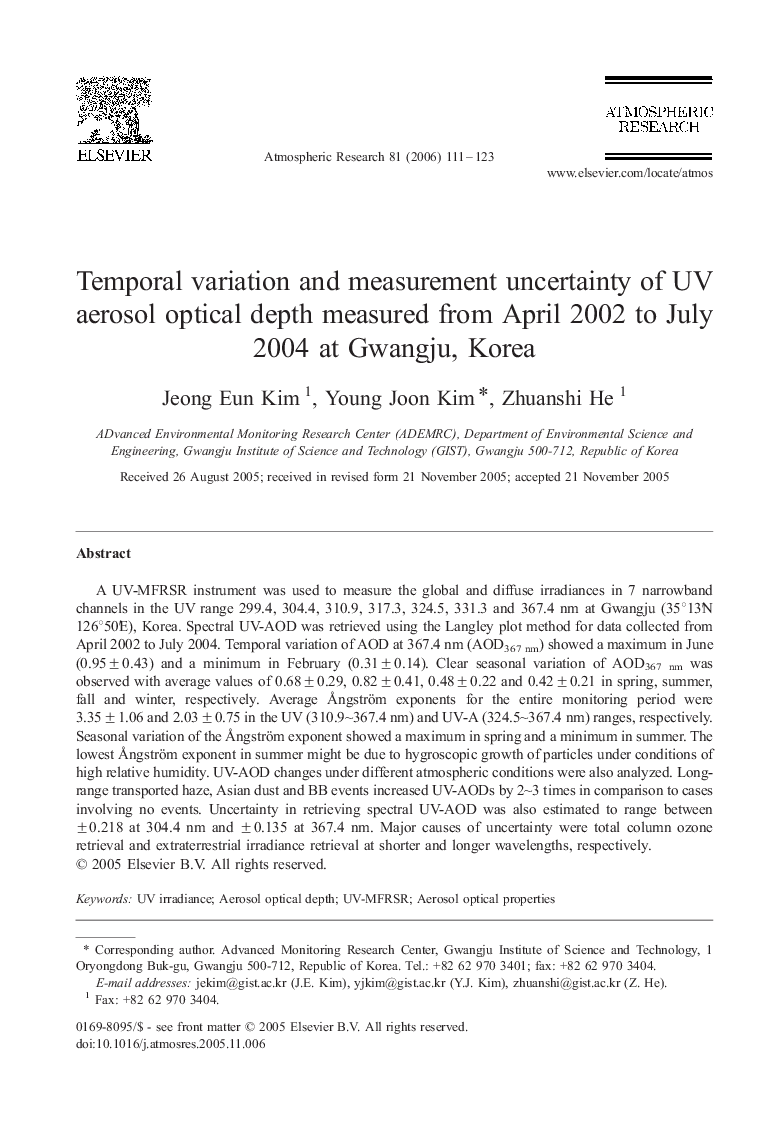| Article ID | Journal | Published Year | Pages | File Type |
|---|---|---|---|---|
| 4451491 | Atmospheric Research | 2006 | 13 Pages |
A UV-MFRSR instrument was used to measure the global and diffuse irradiances in 7 narrowband channels in the UV range 299.4, 304.4, 310.9, 317.3, 324.5, 331.3 and 367.4 nm at Gwangju (35°13′N 126°50′E), Korea. Spectral UV-AOD was retrieved using the Langley plot method for data collected from April 2002 to July 2004. Temporal variation of AOD at 367.4 nm (AOD367 nm) showed a maximum in June (0.95 ± 0.43) and a minimum in February (0.31 ± 0.14). Clear seasonal variation of AOD367 nm was observed with average values of 0.68 ± 0.29, 0.82 ± 0.41, 0.48 ± 0.22 and 0.42 ± 0.21 in spring, summer, fall and winter, respectively. Average Ångström exponents for the entire monitoring period were 3.35 ± 1.06 and 2.03 ± 0.75 in the UV (310.9∼367.4 nm) and UV-A (324.5∼367.4 nm) ranges, respectively. Seasonal variation of the Ångström exponent showed a maximum in spring and a minimum in summer. The lowest Ångström exponent in summer might be due to hygroscopic growth of particles under conditions of high relative humidity. UV-AOD changes under different atmospheric conditions were also analyzed. Long-range transported haze, Asian dust and BB events increased UV-AODs by 2∼3 times in comparison to cases involving no events. Uncertainty in retrieving spectral UV-AOD was also estimated to range between ± 0.218 at 304.4 nm and ± 0.135 at 367.4 nm. Major causes of uncertainty were total column ozone retrieval and extraterrestrial irradiance retrieval at shorter and longer wavelengths, respectively.
